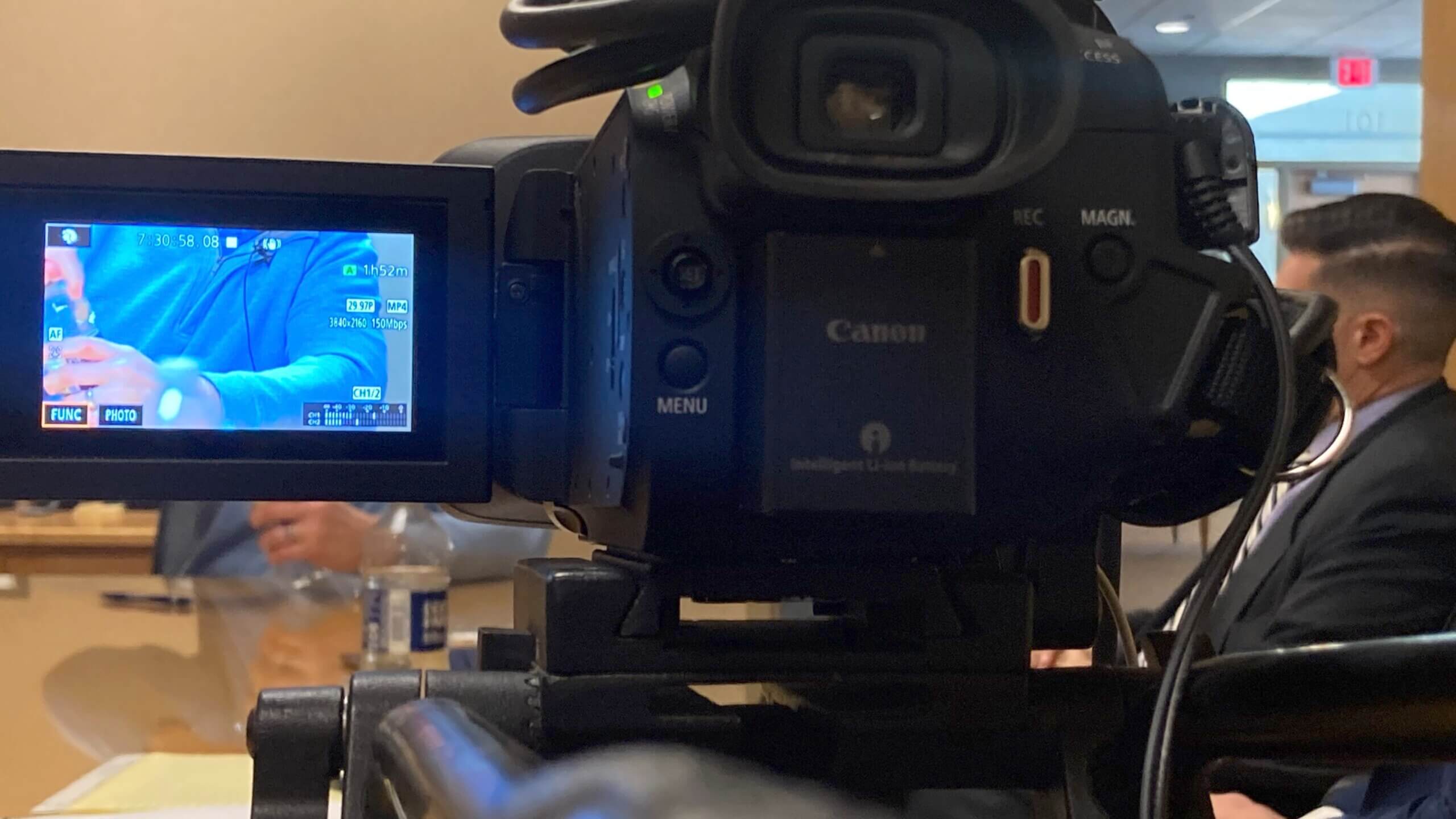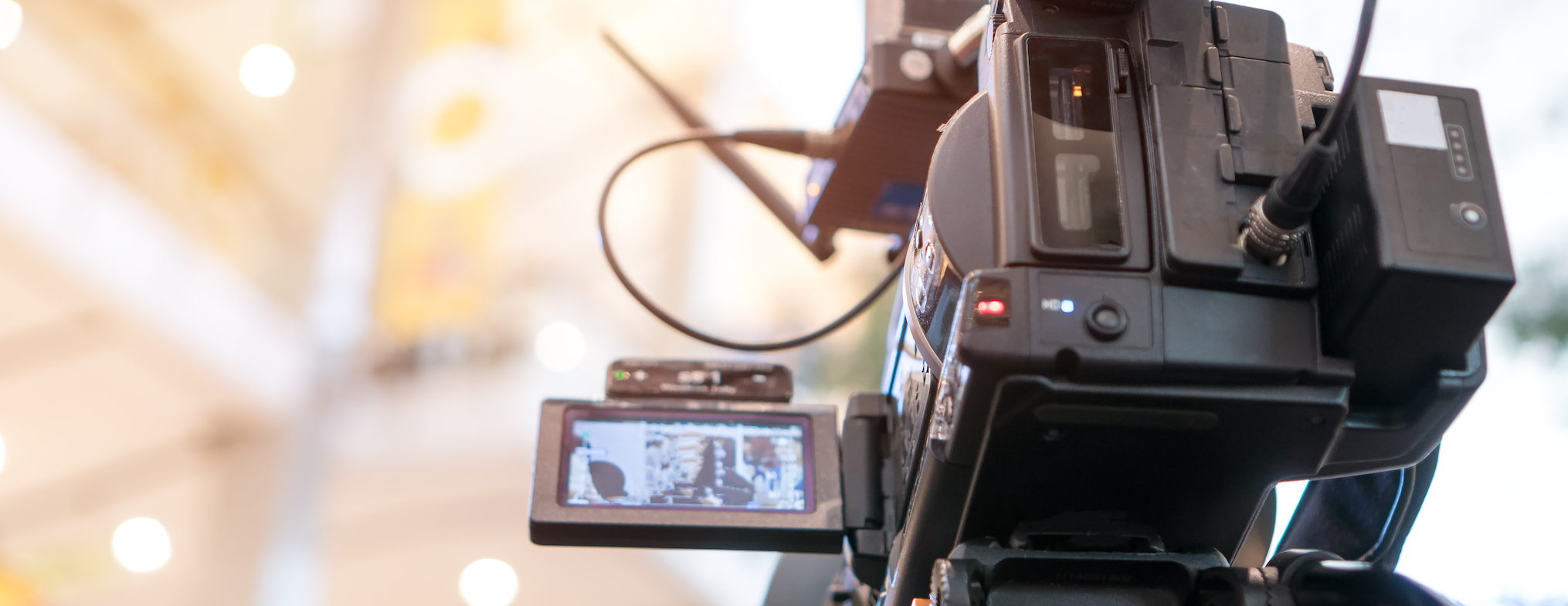The Ultimate Guide to Legal Videography for Attorneys and Legal Teams
The Ultimate Guide to Legal Videography for Attorneys and Legal Teams
Blog Article
Diving Into the Mechanisms of Legal Videography: Unveiling Its Operation in Safeguarding Genuine Visual Testimony for Judicial Proceedings
In the realm of judicial process, the duty of legal videography stands as a cornerstone in preserving and offering aesthetic proof. As innovation continues to development, the systems behind lawful videography have ended up being increasingly intricate, supplying an essential layer of authenticity to testaments recorded on video. By delving right into the operational intricacies of lawful videography, one can discover the thorough procedures that guard the honesty of aesthetic evidence provided in courts - Legal Videography. This expedition not only sheds light on the historic development of legal videography yet additionally hints at the future patterns that may further revolutionize just how visual statements are maintained in the realm of justice.
Historic Advancement of Legal Videography
Examining the historic development of lawful videography exposes a considerable makeover in the capturing and discussion of aesthetic evidence within the legal landscape. In the past, lawful procedures greatly counted on composed pictures and records to document events and give evidence. Nevertheless, with the introduction of video innovation, the lawful sector experienced a standard shift in how visual statement was caught and provided.
The advancement of legal videography can be traced back to the late 20th century when innovations in video clip recording tools made it much more obtainable for usage in court rooms. This technological improvement not just improved the precision and dependability of aesthetic evidence but also transformed the means cases were presented to courts and courts (Legal Videography). Lawyers began to recognize the convincing power of video clip recordings in communicating emotions, nuances, and non-verbal signs that composed transcripts or pictures alone could not capture successfully

Innovation Improvements in Video Clip Documentation
What essential technological developments have revolutionized video clip documentation in the legal field? The lawful area has seen considerable advancements in video paperwork technology that have actually enhanced the credibility and dependability of aesthetic proof in judicial procedures.
Moreover, advancements in video clip encryption and watermarking modern technologies have boosted the protection and tamper-proof nature of video clip evidence, securing it versus unauthorized alterations or meddling. The advent of cloud storage space remedies and remote gain access to capabilities has structured the storage space, access, and sharing of video evidence, assisting in seamless partnership among lawful experts and guaranteeing effective accessibility to critical visual testaments when needed. These technological developments in video paperwork have actually certainly transformed the legal field, enhancing the accuracy, integrity, and admissibility of aesthetic proof in judicial procedures.
Function of Lawful Videographers in Court Room Setups
The advancement of video documentation technology in the lawful field has actually demanded an essential role for legal videographers in courtroom settings, ensuring the honesty and dependability of visual testaments provided throughout judicial process. Lawful videographers play a fundamental duty in catching and preserving exact aesthetic evidence that can be essential in court situations. Their duty includes setting up equipment, taping process, and creating premium video clips that precisely mirror the occasions in the court.
In court setups, legal videographers should follow stringent standards and requirements to keep the authenticity of the aesthetic record. They need to possess an eager eye for information and a comprehensive understanding of lawful procedures to make sure that the video they catch is a real representation of the events link that took place. In addition, legal videographers usually work very closely with legal teams to make certain that the video evidence straightens with the instance's needs and can be successfully offered in court to support the legal debates being made. In general, the duty of legal videographers in court setups is vital in maintaining the concepts of justice and ensuring the transparency of legal proceedings.

Ensuring Admissibility and Honesty of Video Evidence
To keep the integrity of aesthetic proof presented in lawful process, ensuring the admissibility and honesty of video evidence is a crucial obligation for legal videographers. Admissibility refers to the approval of evidence by the court, and for video clip evidence to be acceptable, it has to meet specific Legal Videography criteria. Legal videographers play a crucial function in guaranteeing that the videos they catch adhere to the policies of evidence, such as authenticity, integrity, and significance.
Stability of video clip proof includes preserving the creativity and accuracy of the footage from the moment it is recorded until it is offered in court. This consists of firmly saving the video clip data, documenting the chain of protection, and avoiding any kind of tampering or modifications. Legal videographers must abide by rigorous methods to ensure the integrity of the video evidence and prevent any type of obstacles to its authenticity.
Future Trends in Legal Videography
Offered the enhancing reliance on innovation in legal procedures, legal videographers are poised to welcome ingenious advancements shaping the future of aesthetic statement capture and discussion. Among the noticeable trends on the perspective is the combination of virtual fact (VIRTUAL REALITY) and enhanced fact (AR) modern technologies right into lawful videography. These technologies have the potential to reinvent how visual evidence is presented in courts, enabling discretionary to submerse themselves in the scene of the crime or case.
Furthermore, the usage of synthetic intelligence (AI) algorithms for video analysis is anticipated to simplify the procedure of assessing and examining huge amounts of video footage. AI can help in identifying essential moments, anomalies, and patterns within videos, boosting the efficiency of lawful investigations.

Conclusion
In conclusion, lawful videography has actually played an important role in supplying genuine visual proof for judicial process. With technological advancements and the proficiency of legal videographers, the stability and admissibility of video evidence are guaranteed in courtroom setups. As legal videography proceeds to advance, it will certainly be necessary to support standards that preserve the precision and dependability of visual testament for the future of legal procedures.
Examining the historical development of lawful videography reveals a considerable transformation in the capturing and presentation of aesthetic proof within the legal landscape.The advancement of video documentation modern technology in the legal field has required an essential duty for lawful videographers in courtroom setups, ensuring the honesty and integrity of visual statements offered throughout judicial procedures. In addition, lawful videographers continue reading this typically function very closely with legal teams to guarantee that the video evidence lines up with the case's demands and can be efficiently offered in court to sustain the lawful disagreements being made.To keep the trustworthiness of aesthetic evidence provided in legal process, ensuring the admissibility and integrity of video proof is a critical duty for lawful videographers. As lawful videography proceeds to progress, it will certainly be necessary to support requirements that preserve the accuracy and reliability of aesthetic statement for the future of legal procedures.
Report this page